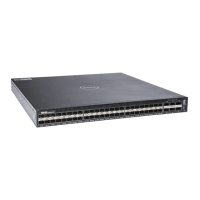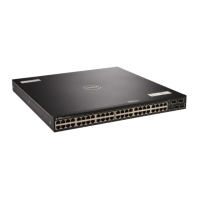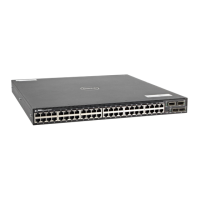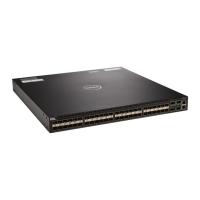• Configure any ports at the edge of the spanning tree’s operating domain as edge ports, which are
directly connected to end stations or server racks. Disable RSTP on ports connected directly to Layer 3-
only routers not running STP or configure them as edge ports.
• Ensure that the primary VLT node is the root bridge and the secondary VLT peer node has the second-
best bridge ID in the network. If the primary VLT peer node fails, the secondary VLT peer node becomes
the root bridge, avoiding problems with spanning tree port state changes that occur when a VLT node
fails or recovers.
• Even with this configuration, if the node has non-VLT ports using RSTP that you did not configure as
edge ports and are connected to other Layer 2 switches, spanning tree topology changes are still
detected after VLT node recovery. To avoid this scenario, ensure that you configure any non-VLT ports
as edge ports or disable RSTP.
VLT Bandwidth Monitoring
When bandwidth usage of the VLTi (ICL) exceeds 80%, a syslog error message (shown in the following
message) and an SNMP trap are generated.
%STKUNIT0-M:CP %VLTMGR-6-VLT-LAG-ICL: Overall Bandwidth utilization of VLT-ICL-LAG
(port-channel 25)
crosses threshold. Bandwidth usage (80 )
When the bandwidth usage drops below the 80% threshold, the system generates another syslog message
(shown in the following message) and an SNMP trap.
%STKUNIT0-M:CP %VLTMGR-6-VLT-LAG-ICL: Overall Bandwidth utilization of VLT-ICL-LAG
(port-channel 25)
reaches below threshold. Bandwidth usage (74 )VLT show remote port channel status
VLT and Stacking
You cannot enable stacking on the units with VLT.
If you enable stacking on a unit on which you want to enable VLT, you must first remove the unit from the
existing stack. For information about how to remove a unit from a stack, refer to
Removing a Unit from an S-Series Stack. After you remove the unit, you can configure VLT on the unit.
VLT and IGMP Snooping
When configuring IGMP Snooping with VLT, ensure the configurations on both sides of the VLT trunk are
identical to get the same behavior on both sides of the trunk.
When you configure IGMP snooping on a VLT node, the dynamically learned groups and multicast router
ports are automatically learned on the VLT peer node.
VLT IPv6
The following features have been enhanced to support IPv6:
• VLT Sync — Entries learned on the VLT interface are synced on both VLT peers.
Virtual Link Trunking (VLT) 1123
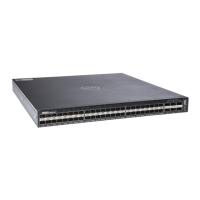
